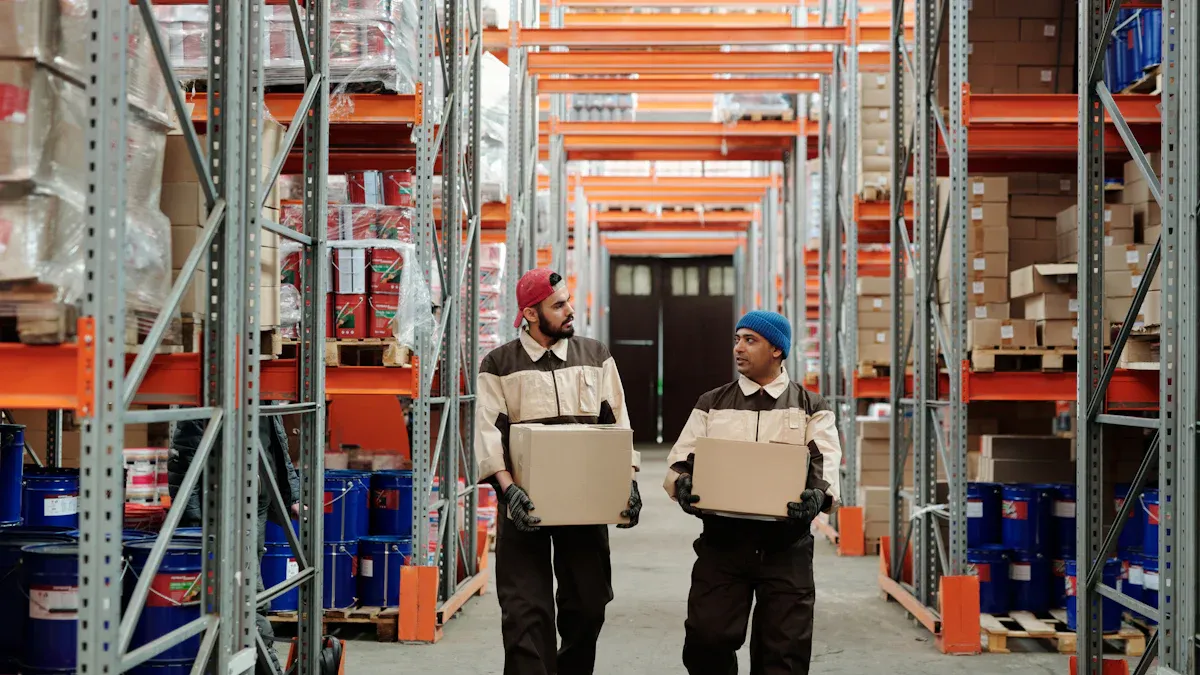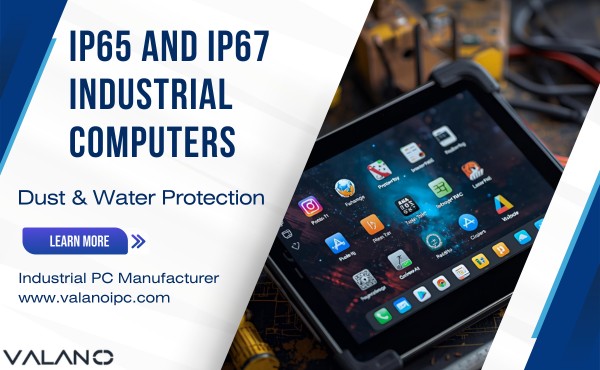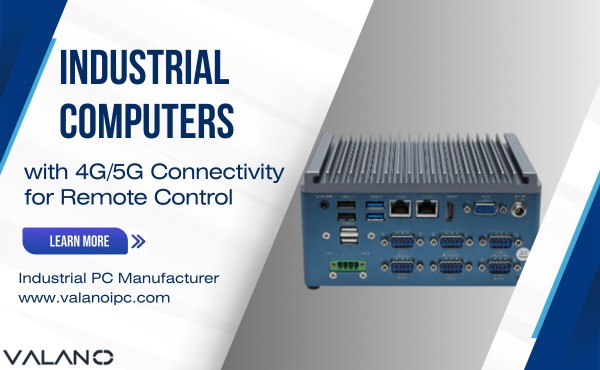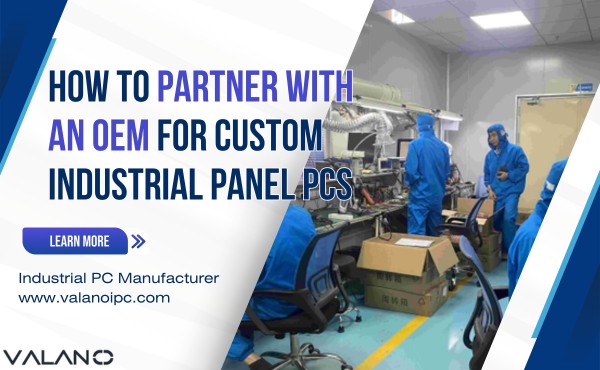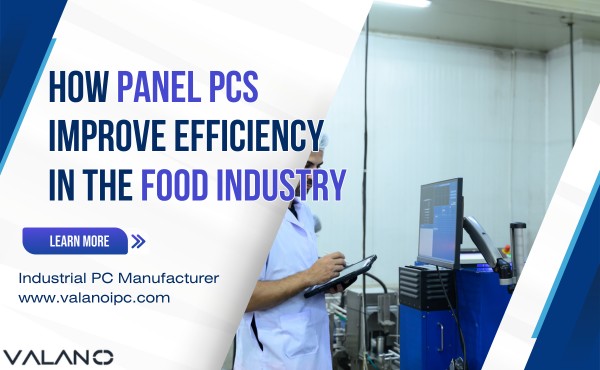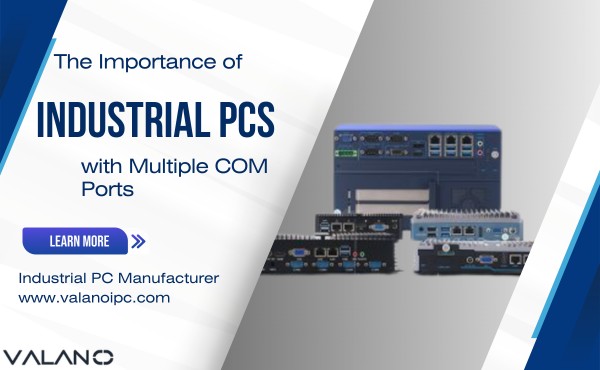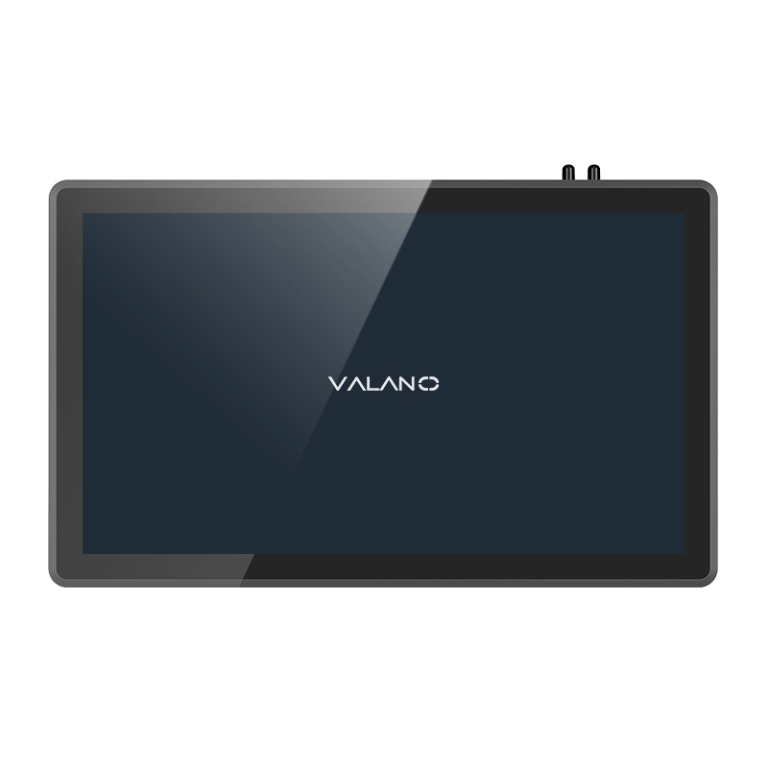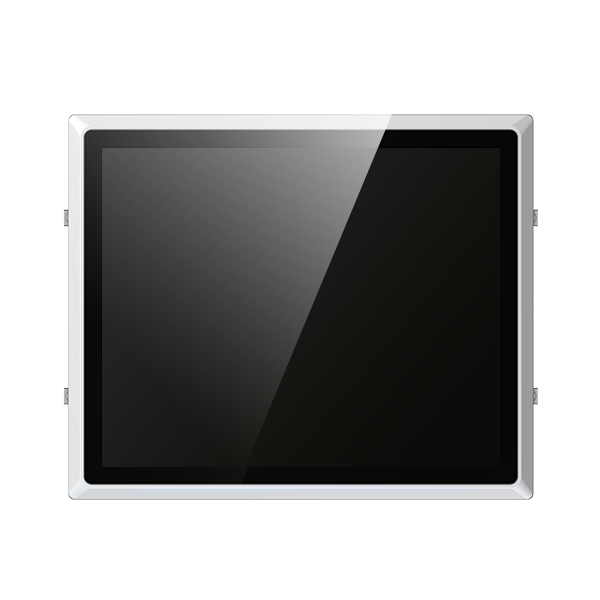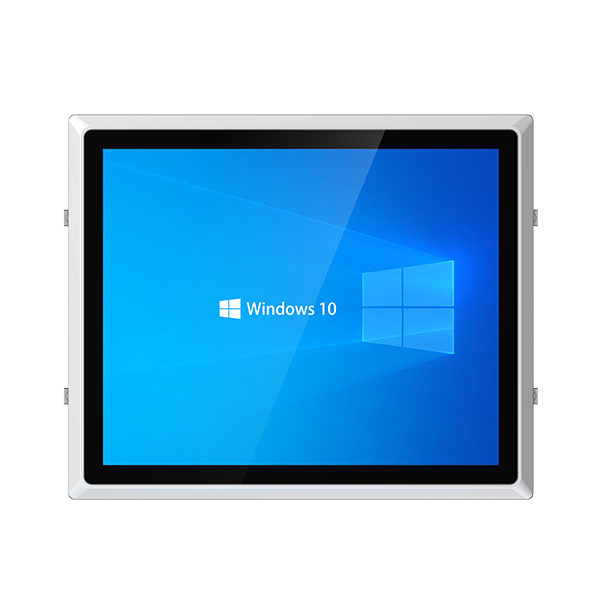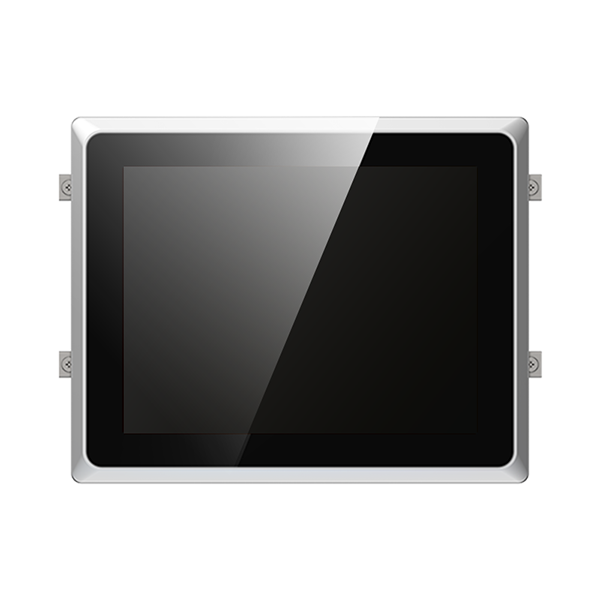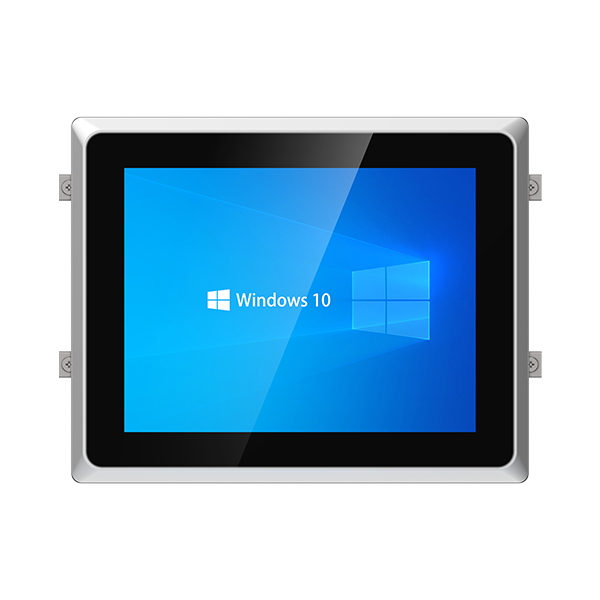Industrial all-in-one computers play a crucial role in demanding workplaces. These advanced systems perform efficiently under harsh conditions, ensuring operations run seamlessly. Businesses utilizing industrial all-in-one computers have seen a remarkable 5.7% annual increase in productivity, significantly outpacing the 2.6% growth observed in other industries. In warehouse environments, addressing issues proactively with industrial all-in-one computers reduces downtime by 50%, saving companies substantial amounts of money every hour.
What are Industrial All-in-One Computers?
Industrial all-in-one computers (or all-in-one touch computers) are built for tough work environments. They combine a screen, computer parts, and ports into one unit. These computers are strong and can handle heat, dust, and shaking. Many meet strict tests like MIL-STD-810 and IEC 60068 for durability. They also work with older machines using ports like RS232 and RS485. This makes them great for factories needing reliable and long-lasting tools.
These computers are important in factories and warehouses. They help with tracking inventory, checking quality, and watching machines. In cement factories, replacing old computers with rugged ones improved work speed and reliability. They also connect with automated systems to make jobs easier and reduce delays. Their flexibility makes them useful for many industrial tasks.

Key Features of Industrial All-In-One Computers
Rugged and Durable Design
Durability is very important in tough workplaces. Industrial all-in-one computers are made to handle dust, water, and shaking. They have strong metal cases and meet standards like IP65. These standards protect them from water sprays and dust. This makes them perfect for factories and warehouses with changing conditions.
Their parts inside are also built to last. Unlike regular computers, they use solid-state drives (SSDs) and cooling systems without fans. This design lowers the chance of breaking down. It keeps the computers working well for a long time. I’ve noticed how this tough design reduces downtime and helps work go smoothly.
Environmental Adaptability
These computers work well in extreme places. They can handle very hot or cold temperatures, wet air, and even outdoor areas. Tests prove their strength, as shown in the table below:
| Feature | Specification |
|---|---|
| IP Rating | IP65/IP66 |
| Operating Temperature Range | -20 ~ 60 °C |
| Enclosure Material | Corrosion-resistant stainless steel |
| Design | Fanless design for energy efficiency |
| Applications | Factory HMI, semi-outdoor computing, livestock management |
This ability to adapt keeps them working even in hard conditions. For example, I’ve seen them used on farms where dust and water are common problems. Their steady performance in such places shows their worth in industrial jobs.
High Performance and Efficiency
These computers are made to work fast and handle big tasks. They have strong processors, lots of memory, and good graphics. This helps them do things like process data quickly and control machines.
They are also very efficient. Cooling systems without fans make them use less energy. This saves power and lowers costs over time. I’ve seen how their speed and efficiency make work easier and increase productivity in factories and warehouses.
Extensive Connectivity Options
Connecting these computers to other systems is easy. They offer many ways to connect, as shown below:
| Connectivity Option | Description |
|---|---|
| Edge Solutions for Smart Monitoring | Collects and shows data easily, improving machine performance. |
| Intelligent Transportation System | Adds better connections and services for smoother operations. |
| Smart Monitoring System | Allows remote control and real-time checks, saving money and reducing problems. |
These options let them work with different systems, like automated machines or smart tools. I’ve seen how these connections make setup simple and help these computers fit into many industrial tasks.
User-Friendly Interfaces
These computers are easy to use. They have touchscreens with clear displays. The screens let users tap and swipe to control them. Even people with little training can use them easily.
From what I’ve seen, simple interfaces lower mistakes and speed up work. For example, workers can quickly check inventory or control machines with a few taps. This ease of use improves productivity and keeps work running smoothly.
Long Lifecycle and Maintenance Support
Industrial all-in-one computers are made to last a long time. They use high-quality parts and come with long-term support. This ensures they stay reliable for years.
Looking at costs over time shows their value. Comparing upfront costs with maintenance expenses proves they save money in the long run. I’ve found that good lifecycle planning cuts repair costs and helps businesses stay on track, keeping operations steady and dependable.
Commercial All In One PCs VS Industrial All In One PCs
Durability and Build Quality
Industrial all-in-one computers are tougher than regular ones. They are made for hard jobs in factories and warehouses. Their cases are often stainless steel or strong aluminum. These materials protect them from bumps, dust, and water. Regular computers usually have plastic cases that break more easily.
Industrial computers meet strict rules like IP66 or IP69K. These rules mean they can handle water sprays and tiny dust particles. Regular computers don’t meet these rules, so they aren’t as reliable for tough work.
Environmental Suitability
Industrial computers work well in extreme places. They can handle temperatures from -20°C to 60°C. I’ve seen them used in hot factories and cold storage areas. Regular computers don’t work well in these conditions. They don’t have strong cooling systems or fanless designs to keep them safe.
Performance and Customization
Industrial computers are faster and can be changed to fit jobs. They have strong processors and special ports like RS232 and GPIO. These features help them control machines and work with factory systems. Regular computers don’t have these options, so they can’t handle hard tasks.
Cost-Effectiveness in Industrial Use
Industrial computers cost more at first but save money later. They last longer and need fewer repairs. I’ve seen companies save money with less downtime and fewer fixes. Regular computers seem cheaper, but they break more often and cost more over time.
All-in-one Touch Computer Benefits for Manufacturing and Warehousing
Improved Productivity and Workflow
Industrial all-in-one computers make work faster in factories. They help by automating tasks and keeping everything running smoothly. For example, they watch over production lines in real-time. This means workers don’t have to check machines or inventory by hand. It saves time and reduces mistakes.
In warehouses, these computers improve how work gets done. They connect easily with robots or conveyor belts to sort and pack items faster. This makes the whole process more efficient. Businesses can meet deadlines without lowering quality. When paired with automation, these computers let workers focus on important jobs, improving overall results.
Reduced Maintenance and Downtime
Broken equipment is a big problem in factories. It can cost a lot of money when machines stop working. Industrial all-in-one computers solve this with their strong design. They use fanless cooling and solid-state drives to avoid breaking down.
These computers last longer and need fewer repairs. For instance, they can handle dust and shaking in factories without stopping. This keeps production lines moving and avoids costly delays. Maintenance teams can also use remote tools to spot and fix problems early. This saves both time and money by preventing bigger issues.
Enhanced Data Management
Data is very important in modern factories and warehouses. Industrial all-in-one computers are great at handling large amounts of data. They work with automated systems to give real-time updates on machines, inventory, and workflows.
This helps managers make smart choices. For example, they can find slow spots in production and fix them. These computers also connect to the cloud, making it easy to share data with teams. Better data management improves efficiency and helps meet industry rules.
Scalability and Future-Proofing
As businesses grow, they need better technology. Industrial all-in-one computers can grow with them. Their parts can be upgraded, like adding more memory or faster processors, without buying a new system.
This flexibility helps businesses over time. For example, a warehouse might start with simple tools and later add advanced robots. These computers can handle those changes easily. They also work with new technologies, making them a smart, long-term investment for busy workplaces.
Conclusion
Industrial all-in-one computers are specially designed, rugged devices that integrate display, computing, and connectivity into a single durable unit. Unlike regular commercial PCs, they withstand harsh conditions like dust, vibration, extreme temperatures, and moisture—common in manufacturing and warehousing environments.
Their robust build, fanless cooling, and industrial-grade ports ensure reliable, long-term operation where standard commercial computers would fail. This makes all in one touch computers indispensable for modern factories and warehouses that demand high durability, stable performance, and seamless integration with automated systems


